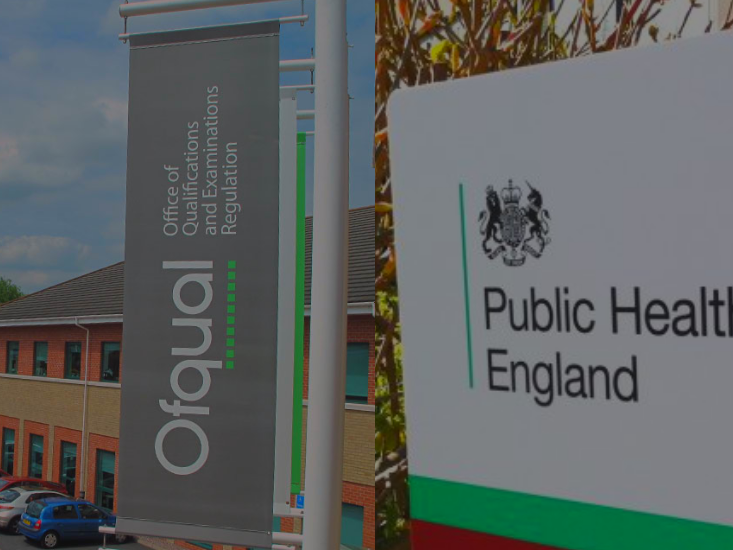Time to capitalise on NHS estates strategy
There was a time when the intricacies of local government and NHS capital expenditure were delicacies best served up by specialist trade magazines for a discerning readership.
It was, therefore, slightly unnerving to find the humdrum realities of council commercialism, and use of property portfolios in the dash for financial independence splashed across the Sunday Times famed Insight section. Was borrowing from the Public Works Loan Board ever so newsworthy for a mass audience before?
But to have this followed up at the start of the week with feverish speculation around the putative involvement of hedge fund operators in the world of NHS transformation, only doubled down on a sense of astonishment. In fairness, it is easier to see the strong news angle of Warren Buffet and his ilk bringing private capital to meet the structural requirements of the Sustainability and Transformation Plan initiative.
But is this really the case? Sir Robert Naylor’s independent report to secretary of state for health Jeremy Hunt – NHS Property and Estates – Why the estate matters for patients – is the prime mover for the world of red braces and Mayfair mansions possibly embracing the rather less plush environs of the more than 1,200 sites owned by NHS trusts.
Sir Robert’s task was to revise for the first time since the 1962 Hospital Plan for England a scheme for rebuilding NHS infrastructure to meet modern needs in the context of the Five Year Forward View (5YFV).
According to renowned health experts The King’s Fund, who validated the report, there is no overarching estates strategy for the NHS and it remains unclear where leadership for NHS estates strategy lies – because different initiatives place responsibility in different parts of the system. And although many local areas have established structures for place-based estates strategy and partnership working, in many areas the health sector has not been invited to the dance and its input is absent.
The report examines the scope for short-term disposals of £2bn in assets held by trusts, NHS Property Services and Community Health Partnerships over the Spending Review period to free up land for 26,000 new homes by 2020.
The report estimates that STP capital requirements might total £10bn – a figure based on a “conservative” £5bn estimate of backlog maintenance and a similar capital sum to deliver the STP plans.
However, it might have proved more sensible and realistic to have simply doubled the figure and added a few billion additional pounds for good measure. Analysis of Freedom of Information requests carried out by the BMA suggested a £9.5bn price-tag for funding STPs nationally, and other commentators have hazarded figures in the ballpark of £8bn – £10bn. The report also believes the £5bn maintenance backlog to be a ‘substantial underestimate’.
The Naylor review makes 17 recommendations to overhaul NHS property across three categories. The main call in the first category, to improve capability and capacity, is for the establishment of a powerful new NHS Property Board, as a strategic arm’s length body with the expertise to support the STP initiative. This would involve expanding current resources into a new national strategic planning and delivery unit to support local areas and boost capacity to deliver major projects.
So far so good. This aligns with the recommendation to establish a national Property Centre of Excellence to support local strategy and planning made in the Breaking Barriers report “Building a sustainable future for health and social care”.
The conclusion reached by both Naylor and Breaking Barriers is the same. Accountability and responsibility for health property strategy should be aligned, so as to manage the development and execution of a single, integrated property strategy, across health and social care at national level.
The second category of encouraging and incentivising local action advises that STPs should develop affordable estates and infrastructure plans, with a capital strategy, to deliver the 5YFV and address backlog maintenance. Access to capital funding should depend on devising “stretching plans” which show how they would improve performance against benchmarks. Land vacated by the NHS should be prioritised for the building of homes for NHS staff, the report further suggested.
The final category of funding and national planning makes recommendations for collaboration among all national bodies to develop a robust capital investment plan for the NHS by this summer. Three possible sources for deriving the capital investment needed to deliver service transformation in strong STP plans are listed – property disposals, private capital for primary care and HM Treasury.
A bare sentence or two, on page 32 of the report, makes suggestions on private finance as a way of delivering health facilities without adding to public borrowing or the costs and inflexibility of previous PFI and LIFT schemes. “However, the current low rates of return and the low risk profile of NHS investments means that there is likely to be no shortage of private capital finance to the NHS,” the report states.
How this has been conjured into visions of hedge fund tycoons stealing a march across Trafalgar Square from their Mayfair mansions to Richmond House in Whitehall is a mystery of the journalistic arts. Perhaps, however, the press attention might serve to focus minds at Horse Guards Road that the £325m promised at the March Budget to fund trailblazing STPs over the next three years might not be quite enough cash to cut the transformation mustard.
To incentivise local autonomy against a backdrop of devolution, the report rows back from the establishment of a centralised management function for the NHS estate run through a single entity – as is the case in many large private sector organisations. The fear of massive structural reorganisation and need for primary legislation seems to have shot this fox. Instead NHS providers will keep their high degree of independence over estates management – but will be subject to behaviour change in the form of increasingly tweaked incentives to guide their investment, purchase and disposals of property, to deliver the 5YFV agenda.
In common with all national property initiatives, the new NHS estates strategy risks stoking tensions between localist and top-down agendas. Tensions between the devolutionary drive for flexible, place-based change and top-down diktat for purchasing and contracting arrangements that promise economies of scale. If handled dynamically, like the ‘tight-loose’ model introduced by Francis Maude for Whitehall contracting, the tensions have the potential to be value creating. It might be just be the health service’s ticket to the dance with local authorities and the wider public estate.
However, any attempt to fudge the place-based element, for example by isolating central government property needs into hub arrangements that would separate them from the wider health community, would likely endanger the ethos and aims of the project.
In the words of Mad Men’s Don Draper: “This isn’t a strategy but two different ideas with the word ‘and’ joining them.”
Naylor’s review also sees scope for further focus on back office efficiencies, in line with the Carter Report recommendations to consolidate and rationalise the NHS administrative estate – potentially by working with the wider public estate around government hubs to unlock higher savings.
Another progressive facet of the report is its assessment of the potential impact of technology to influence the NHS estate of the future. The report urges the Department of Health to commission a study to evaluate the future impact of digital strategies might have in reducing the number of buildings in the NHS.
This aligns well with the report on next steps on the Five Year Forward View (5YFV) programme – a plan setting out how practical improvements in prized areas – cancer, mental health and GP access – could be made while transforming the delivery of care to ease pressure on acute services.
With the NHS under pressure the 5YFV next steps also details an accelerated drive to improve efficiency and use of technology to deliver better care against the constraints of rising demand and flatlining budgets.
Of particular note, this plan envisages the role of digital innovation to integrate care and support the sustainability of the overall health service through the following initiatives: –
- Establishment in spring 2017 the NHS Digital Apps Library – an initial offering of 20 app services across three tiers of application: ‘NHS approved’ with a NICE approved evidence base for helping people manage and improve help; ‘NHS connected’ apps tested and approved for NHS systems allowing users to download information from NHS systems and ‘Health apps’ a directory of general health apps.
- Launch by September 2017 of a new academy to train next generation of Chief Information Officers and Chief Clinical Information Officer – seeking to align digital tech with business and clinical needs.
- Examination of digital contribution to research and ability to collect, aggregate and analyse the data generated by the NHS to deliver healthcare aims and help, through interoperability, underpin the NHS and wider life-sciences strategies.
- Work throughout 2017 to design online triage services that allow patients to notify their symptoms and receive either tailored advice online or a call back from a healthcare professional. Apps, web tools and interactive avatars will be tested to define the best approach so that by December 2017 all areas will have an NHS 111 online service that connects to local Integrate Care Units.
- Benchmarking referral from GP practices using CCG digital dashboards and new tools from NHS Digital;
- Investment in mental health technology;
- Collecting fees from patients outside EEA countries and aiding eligibility.
DragonGate will shortly be publishing the findings of a roundtable event we held for Sopra Steria into how digital innovation could help underpin the future of STPs – examining the role of redesigned services, patient apps and better use of health data to deliver significant upstream savings, commercial revenue streams and improved health outcomes.

























